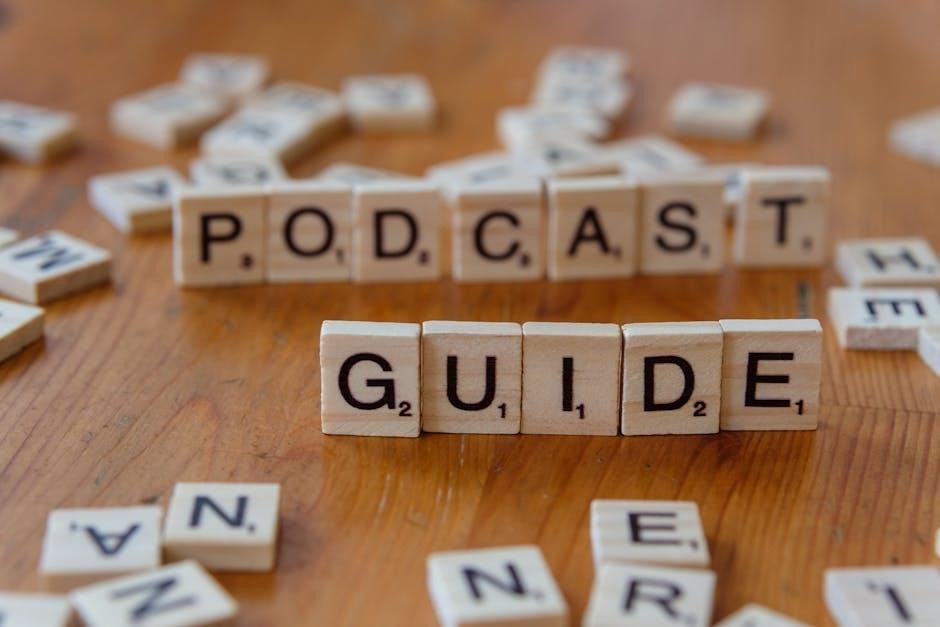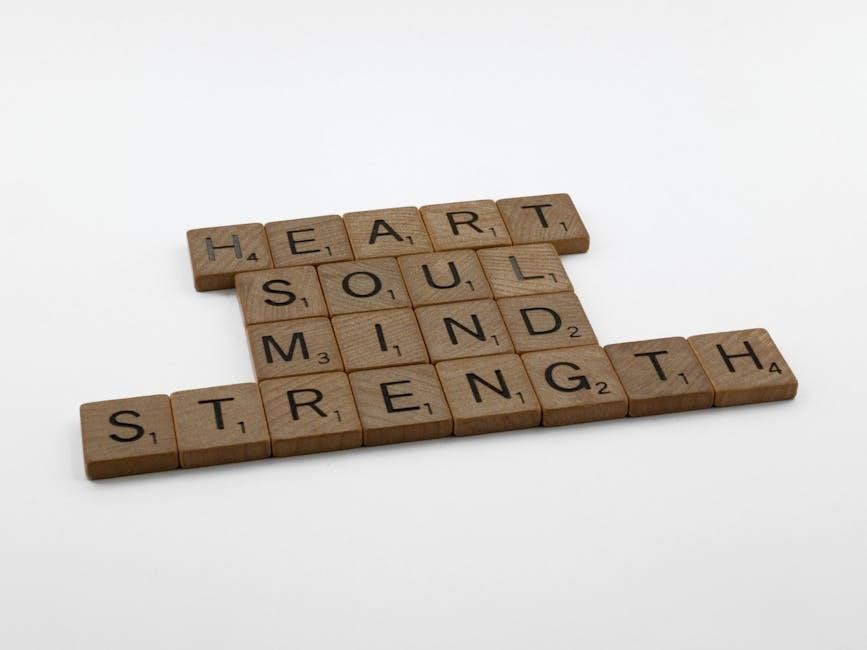The New York Times Crossword is a beloved word game featuring grids filled with clues, offering daily challenges for solvers of all skill levels.
What is the New York Times Crossword?
The New York Times Crossword is a popular word game published daily by The New York Times. It consists of a square grid divided into black and white squares, where players fill in words or phrases based on clues provided. The clues can range from straightforward definitions to complex wordplay, anagrams, or puns. The puzzle is designed to challenge solvers of all skill levels, from beginners to experts. Each crossword typically follows a themed structure, with clues and answers connected by a central idea or pattern. Solving the NYT Crossword is not only a fun mental exercise but also a way to expand vocabulary, sharpen critical thinking, and enjoy a sense of accomplishment. It has become a daily ritual for millions worldwide.
Historical Background of the NYT Crossword
The New York Times Crossword has a rich history dating back to its debut in 1942, when it first appeared in the NYT as a weekly feature. Arthur Hays Sulzberger, the publisher at the time, introduced the puzzle as a way to entertain readers during World War II. The crossword quickly gained popularity and became a daily fixture in 1950. Over the years, it has evolved to include themed puzzles, varying difficulty levels, and the incorporation of modern language. The NYT Crossword has been edited by notable figures like Margaret Farrar and Will Shortz, who have contributed to its enduring appeal. Today, it remains a cultural icon, challenging and delighting solvers worldwide while maintaining its legacy as a cornerstone of intellectual entertainment.
Why the NYT Crossword is Popular
The New York Times Crossword remains a beloved pastime due to its intellectual stimulation and universal appeal. It challenges solvers with clever clues and diverse themes, catering to all skill levels. The puzzle’s daily availability creates a consistent routine for enthusiasts, fostering a sense of accomplishment with each solved clue. Its ability to blend entertainment with mental exercise makes it a popular choice for those seeking both relaxation and cognitive engagement. Additionally, the NYT Crossword has become a cultural touchstone, often referenced in media and conversations, further enhancing its widespread appeal. Its enduring popularity lies in its unique blend of tradition, innovation, and the joy of problem-solving.

Understanding the Clue “Set of Guiding Principles”
A “set of guiding principles” refers to a collection of rules or ethical standards that direct behavior or decision-making, often used in crosswords to hint at moral or legal frameworks like international law or moral advice columns.
Definition of “Set of Guiding Principles”
A “set of guiding principles” refers to a collection of rules, ethical standards, or values that provide direction or guidance for behavior, decision-making, or conduct. These principles are often foundational to organizations, legal systems, or moral frameworks. For instance, international law is a set of rules and agreements binding between countries, while moral advice columns like Your Mileage May Vary offer guiding principles for navigating ethical dilemmas. In crosswords, clues like “set of guiding principles” often hint at concepts such as treaties, moral codes, or legal frameworks, challenging solvers to think abstractly about systems that govern human behavior or institutional actions.
Common Examples of Guiding Principles
Examples of guiding principles include the Ten Commandments, the Golden Rule, and the Hippocratic Oath. These principles provide moral or ethical guidance, shaping behavior and decision-making. For instance, the Ten Commandments are foundational to religious and moral codes, while the Golden Rule encourages treating others with kindness and respect. In professional contexts, the Hippocratic Oath serves as a guiding principle for medical ethics. Similarly, the Bill of Rights outlines fundamental freedoms in legal systems. These examples illustrate how guiding principles are used to establish standards and values in various aspects of life. They are often universal and timeless, offering clear direction for individuals and organizations alike.
How “Set of Guiding Principles” is Used in Crosswords
In crosswords, the phrase “set of guiding principles” often appears as a clue, typically hinting at a concept like “ethics,” “morals,” or “code.” Constructors may present it as a definition clue, asking for a term that encapsulates a group of rules or values. For example, “ethics” might fit a 6-letter answer. The clue could also be phrased as an anagram or a fill-in-the-blank, depending on the puzzle’s theme. Solvers often start by identifying common prefixes or suffixes, then work through intersecting letters. Crossword enthusiasts use word lists or dictionaries to find matches, leveraging patterns and familiar terms to fill in the grid. This clue type tests both vocabulary and critical thinking, making it a popular challenge in puzzles like the NYT Crossword.

Types of Crossword Clues
Crossword clues include definition clues, anagrams, wordplay, and fill-in-the-blank clues. Each type challenges solvers differently, requiring vocabulary, pattern recognition, and creative thinking to solve effectively.
Definition Clues
Definition clues are the most straightforward type of crossword clue. They provide a direct description of the word or phrase to be filled in. For example, if the clue is “Set of guiding principles,” the answer might be “ETHICS” or “MORALS.” These clues test the solver’s vocabulary and ability to match words with their meanings. They often rely on precise definitions, making them a great starting point for beginners. In NYT crosswords, definition clues are commonly used for theme answers or key entries. Solvers should look for clear, concise language and consider word lengths to narrow down possibilities. Mastering definition clues is essential for building a strong crossword-solving foundation.

Anagram Clues
Anagram clues involve rearranging letters to form the correct answer. For example, the clue “Set of guiding principles” might be solved by rearranging letters to spell “ETHICS” or “PRINCIPLES.” These clues often include phrases like “Rearranged” or “Mixed up” to signal the anagram. Solving anagrams requires identifying common letters and recognizing patterns. In NYT crosswords, anagram clues are common in themed puzzles, where the answer relates to the puzzle’s theme. They challenge solvers to think creatively and strategically. Practice with anagrams improves pattern recognition and letter manipulation skills, which are invaluable for tackling tougher crosswords. Anagram clues are a fun and rewarding aspect of crossword solving that test both vocabulary and problem-solving abilities.
Wordplay and Pun Clues
Wordplay and pun clues rely on clever twists, often using double meanings or jokes. For example, a clue like “Set of guiding principles that’s also a type of tree” might lead to “ETHICS” or “MORALS,” playing on the word “tree” sounding like “three” or another homophone. These clues challenge solvers to think creatively and recognize puns. In NYT crosswords, wordplay clues often appear in themed puzzles, where the answer ties into the theme in a humorous or unexpected way. Puns add a layer of fun and complexity, making puzzles more engaging. Mastering wordplay clues enhances vocabulary and critical thinking skills, as solvers must decipher cleverly disguised meanings. They are a hallmark of the NYT crossword’s clever and entertaining style.
Fill-in-the-Blank Clues
Fill-in-the-blank clues present a sentence or phrase with a missing word, requiring solvers to fill in the blank. For example, “A set of guiding principles might be called ______” could lead to “ETHICS” or “MORALS.” These clues are popular in crosswords as they often feel intuitive, resembling how we fill in gaps in everyday conversation. They rely on general knowledge or common phrases, making them accessible to a wide range of solvers. In NYT crosswords, these clues are often used to introduce themes or key concepts, such as the idea of guiding principles. Fill-in-the-blank clues are straightforward yet effective, as they test both vocabulary and the ability to recognize common expressions. They add variety to puzzles while maintaining clarity and simplicity.

Strategies for Solving Crossword Puzzles
Strategies for solving NYT crosswords involve starting with easy clues, using word lists, identifying patterns, and systematically working through the grid. Themes like guiding principles can help.
Starting with Easy Clues
Starting with easy clues is a fundamental strategy for solving NYT crosswords. Begin by identifying straightforward clues with clear answers, such as common phrases or well-known facts. This approach helps build momentum and provides letters that can be used to decipher more challenging clues. For example, short definitions or familiar terms related to “set of guiding principles” can serve as a foothold. By tackling simpler clues first, solvers can gradually fill in the grid, making it easier to approach more complex or ambiguous clues later on; This methodical process ensures steady progress and reduces frustration, making the overall solving experience more enjoyable and efficient.
Using Word Lists and Dictionaries

Using word lists and dictionaries is a valuable strategy for solving NYT crosswords, especially when stuck on a clue like “set of guiding principles;” These tools provide quick access to synonyms, definitions, and related terms, helping solvers identify possible answers. For example, if the clue hints at ethical standards, dictionaries can reveal words like “ethics” or “morals.” Word lists, particularly those tailored for crosswords, often include high-probability answers that constructors frequently use. By referencing these resources, solvers can fill in gaps efficiently and gain confidence in their answers. This method is particularly useful for unfamiliar terms or when unsure of a word’s spelling or meaning, making it an essential part of a solver’s toolkit.
Identifying Patterns and Common Words
Identifying patterns and common words is a crucial strategy for solving NYT crosswords, especially when tackling clues like “set of guiding principles.” Experienced solvers often recognize frequently used words or common prefixes and suffixes, which can help deduce answers. For example, words like “ethics” or “morals” often appear in crosswords related to guiding principles. By analyzing the grid, solvers can spot repeating letters or common word lengths, narrowing down possibilities. This skill, developed through practice, allows solvers to quickly fill in answers, even for abstract clues. Over time, familiarizing oneself with crossword patterns and high-probability words becomes a powerful tool for efficiently completing puzzles.
Working Through the Grid Systematically
Working through the grid systematically is an effective strategy for solving NYT crosswords, especially when clues like “set of guiding principles” are involved. Start by tackling easier clues first, such as short answers or those with common words, to build momentum. Use word lists and dictionaries to find potential matches, then eliminate options based on letters already filled in. For abstract clues, focus on intersecting words to narrow down possibilities. By methodically addressing each clue and updating the grid accordingly, solvers can uncover patterns and connections that lead to the solution. This organized approach ensures that even complex or vague clues, like those related to guiding principles, can be cracked with patience and deduction.

Common Themes in NYT Crosswords
Common themes in NYT Crosswords often revolve around guiding principles like ethics, integrity, and core values, providing a cohesive framework for puzzle construction and solving, and enhancing the solving experience with meaningful challenges.
Themed Puzzles Explained

Themed puzzles in the NYT Crossword often center around a unifying idea, such as a “set of guiding principles,” which serves as the puzzle’s backbone. These themes are designed to create a cohesive and engaging challenge, where clues and answers revolve around a central concept. For example, a puzzle might focus on ethical codes, core values, or mission statements, all of which are sets of guiding principles in different contexts. Constructors use wordplay, puns, and clever titles to hint at the theme, helping solvers piece together the puzzle more efficiently. Themed puzzles not only test vocabulary and pattern recognition but also encourage critical thinking about the theme itself, enhancing the overall solving experience with depth and meaning.
Examples of Themes Related to Guiding Principles
NYT Crossword puzzles often feature themes tied to “sets of guiding principles,” such as ethical codes, core values, or philosophical frameworks. For instance, a puzzle might revolve around “The Ten Commandments,” “The Golden Rule,” or “The Four Noble Truths” of Buddhism. Another example could be “Corporate Mission Statements,” where clues reference well-known companies’ guiding principles. Themes like “Moral Codes in Literature” or “Founding Principles of Democracy” also appear frequently. These themes not only provide a cohesive structure but also challenge solvers to think critically about how guiding principles shape various aspects of life. Constructors often use clever clues and grid arrangements to highlight these themes, making the puzzles both educational and engaging;
How Themes Influence Clue Structures
Themes in NYT Crosswords significantly shape the structure and style of clues, ensuring they align with the puzzle’s central idea. For example, a puzzle centered on “Set of Guiding Principles” might use clues that reference famous quotes, ethical codes, or philosophical teachings. Constructors often craft clues that are more indirect or layered when a strong theme is present, requiring solvers to connect the dots between the clue and the theme. Additionally, themed puzzles may incorporate wordplay, anagrams, or puns that tie directly to the guiding principles theme. This integration enhances the puzzle’s coherence and intellectual appeal, making it more engaging for solvers who enjoy both the challenge and the thematic connection.

Advanced Techniques for Expert Solvers
Expert solvers use advanced strategies like understanding constructor styles, mastering anagrams, and recognizing patterns to solve crosswords efficiently, often relying on guiding principles to refine their approaches.
Understanding Crossword Constructors’ Styles
Expert solvers benefit from studying the unique styles of various crossword constructors, as their patterns and tendencies often align with guiding principles. Constructors frequently incorporate recurring themes, anagram setups, or wordplay that reflect their personal approaches. By recognizing these styles, solvers can anticipate answers more effectively, especially when clues hint at guiding principles. For instance, some constructors favor puns or historical references, while others rely on modern slang or literary allusions. Familiarity with these traits allows solvers to apply guiding principles strategically, narrowing down potential answers and enhancing their problem-solving efficiency. This advanced technique not only speeds up completion but also improves accuracy, making it a cornerstone for mastering the NYT Crossword.
Using Crossword Solving Software and Tools
Crossword solving software and tools have become indispensable aids for both casual and expert solvers. These resources often include features like clue databases, anagram solvers, and crossword grid fillers. Tools such as Crossword Tracker or Armored Penguin Crosswords can quickly provide answers or hints, helping solvers overcome stubborn clues. Additionally, apps like Crossword Solver or dictionaries integrate AI to analyze partial answers and suggest possibilities. For enthusiasts of the NYT Crossword, these tools can enhance problem-solving skills by revealing patterns and common answers tied to guiding principles. While they don’t replace the joy of solving puzzles manually, they serve as valuable resources for learning and improving. Regular use of such tools can significantly boost solving speed and accuracy, making them essential for modern crossword enthusiasts.
Mastering Anagrams and Reversed Words
An essential skill for crossword enthusiasts is mastering anagrams and reversed words, which frequently appear in the NYT Crossword. Anagrams involve rearranging letters to form new words, while reversed words are simply spelled backward. Both techniques challenge solvers to think creatively and recognize patterns. For example, the word “ethics” can become “htiocs” or its reverse, “scithe.” To excel, solvers should practice identifying common anagram patterns and reversed word endings. Tools like anagram generators can aid in deciphering tricky clues. Regular practice with specific exercises or puzzle books can enhance these skills. By mastering anagrams and reversed words, solvers gain a competitive edge, particularly in puzzles with themes tied to guiding principles, where such wordplay often highlights key concepts.
Recognizing Common Crossword Patterns
Recognizing common crossword patterns is a vital skill for solvers, especially in NYT Crosswords. Constructors often use recurring themes and wordplay that follow predictable structures. For instance, many puzzles feature a “set of guiding principles,” which might manifest as a series of related words or phrases. Common patterns include symmetrically placed answers, repeated letter combinations, or sequential clues tied to a central theme. Solvers should look for these consistencies, as they often hint at the puzzle’s underlying structure. By studying past puzzles and identifying these patterns, solvers can anticipate answers more effectively. This skill is particularly useful for themed puzzles, where understanding the overarching theme can reveal hidden connections between clues and answers.

Resources for Improving Crossword Skills
Enhance your crossword skills with online tutorials, crossword books, and solver communities. Practice daily puzzles and use specialized software to master techniques and patterns effectively.
- Online tutorials and guides
- Books on crossword strategies
- Communities for shared learning
- Practice puzzles and tools
Online Tutorials and Guides
Online tutorials and guides are excellent resources for improving crossword skills, especially for understanding clues like “set of guiding principles.” Websites like the New York Times Learning Network offer step-by-step lessons and tips for beginners. Video tutorials on platforms like YouTube provide visual explanations of solving techniques, while blogs and forums share insights from experienced solvers. Many online guides focus on specific strategies, such as identifying common patterns or deciphering anagrams. Some platforms even offer interactive exercises to practice skills in real-time. These resources are invaluable for learners seeking to grasp the nuances of crossword puzzles and improve their problem-solving abilities. They cater to all skill levels, ensuring everyone can enhance their crossword expertise.
Books on Crossword Solving
Books on crossword solving are invaluable resources for mastering the NYT Crossword, especially for understanding clues like “set of guiding principles.” Titles such as The New York Times Crossword Puzzle Dictionary and Crossword Solver’s Handbook provide comprehensive guides to solving techniques. These books often include lists of common words, anagram patterns, and strategies for tackling tricky clues. Many focus on specific skills, like identifying themes or deciphering puns. For example, The Crossword Enthusiast’s Handbook offers tips on breaking down complex clues into manageable parts. These books cater to both beginners and experienced solvers, offering insights into the art of crossword construction and clue writing. They are essential tools for anyone aiming to improve their solving skills and enjoy the NYT Crossword more fully.
Communities and Forums for Crossword Enthusiasts
Communities and forums dedicated to crossword enthusiasts are thriving spaces for sharing knowledge and strategies. Platforms like Reddit’s r/NYTcrossword and specialized crossword forums offer hubs for solvers to discuss clues, such as “set of guiding principles.” These communities often share tips, solve puzzles collaboratively, and provide insights into common themes and clue structures. Many forums feature experienced solvers who offer advice and breakdowns of tricky clues. Additionally, these spaces foster camaraderie among enthusiasts, creating a supportive environment for learners and experts alike. Engaging with these communities can enhance problem-solving skills and deepen enjoyment of the NYT Crossword. They serve as invaluable resources for anyone looking to improve their crossword-solving abilities and connect with like-minded individuals.
Practice Puzzles and Daily Challenges
Engaging in practice puzzles and daily challenges is essential for mastering the NYT Crossword, especially when tackling clues like “set of guiding principles.” The NYT Crossword app and website offer daily puzzles that cater to all skill levels, from beginners to experts. Solvers can start with easier puzzles, such as the Mini Crossword, and gradually move to more complex ones. Regular practice helps build familiarity with common themes, clue structures, and vocabulary. Additionally, many online platforms provide archived puzzles and practice grids, allowing solvers to refine their skills at their own pace. Consistent practice enhances pattern recognition, reduces solving time, and improves overall confidence in deciphering tricky clues like “set of guiding principles.”
The NYT Crossword, with clues like “set of guiding principles,” embodies intellectual growth, entertainment, and cultural insight, inspiring solvers to embrace lifelong learning and fun.
The NYT Crossword clue “set of guiding principles” refers to a collection of rules or ethical standards that guide behavior or decision-making. This concept is often represented in crosswords through concise clues that challenge solvers to think creatively. The NYT Crossword has a rich history, dating back to 1942, and has evolved into a cultural phenomenon, offering daily puzzles that cater to both casual and expert solvers. Its popularity stems from its ability to combine intellectual stimulation with entertainment, making it a beloved activity for millions. By mastering techniques like identifying patterns and using wordplay, solvers can improve their skills and enjoy the rewarding experience of completing a puzzle.
Encouragement to Keep Practicing
Consistent practice is key to mastering the NYT Crossword, especially when tackling clues like “set of guiding principles.” Each puzzle offers a unique learning opportunity, helping solvers improve their vocabulary, critical thinking, and problem-solving skills. Even if a clue seems challenging at first, persistence pays off, and the sense of accomplishment grows with each solved puzzle; Embrace the journey, celebrate small victories, and remain patient with yourself. Over time, you’ll develop instincts and strategies that make solving crosswords more enjoyable and rewarding. Keep practicing, and soon you’ll find yourself confidently unraveling even the most complex clues!
Final Thoughts on the NYT Crossword
The NYT Crossword remains a timeless and intellectually stimulating activity that challenges and rewards solvers daily. Its ability to blend vocabulary, logic, and creativity makes it a standout puzzle. Clues like “set of guiding principles” not only test knowledge but also encourage critical thinking and problem-solving. Solving crosswords sharpens cognitive skills and fosters a deeper appreciation for language and patterns. Whether you’re a casual solver or an avid enthusiast, the NYT Crossword offers endless opportunities for growth and enjoyment. Embrace the challenge, learn from each puzzle, and let the joy of solving become a lasting part of your routine. The NYT Crossword truly is a celebration of intellect and creativity.
